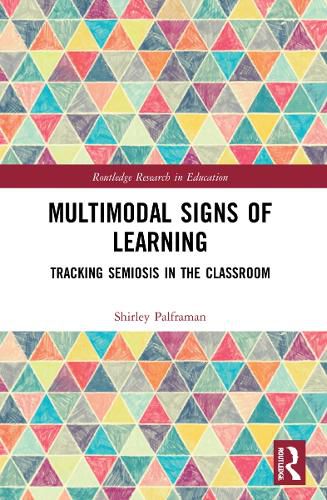Readings Newsletter
Become a Readings Member to make your shopping experience even easier.
Sign in or sign up for free!
You’re not far away from qualifying for FREE standard shipping within Australia
You’ve qualified for FREE standard shipping within Australia
The cart is loading…






Multimodal Signs of Learning proposes a methodology to uncover evidence of learning in students' multimodal compositions. Informed by social semiotic theory, the book tracks representation of subject content from physical and embodied teaching resources to students' handmade artefacts and physical presentations.
Using materials from secondary school history and science classrooms, multimodal realizations of specific representational processes are tracked from the input of resources through to the students' multimodal compositions - their posters, models and physical presentations. Through tracking semiosis, the book exposes the epistemologies inherent in the representational choices articulated in the students' multimodal designs. These, it is argued, are to be valued as signs of learning. Learning is thus characterized as 'design' and the transformation of subject content through representation in different modes shown not only to promote learning, but also to contain evidence for its recognition.
The book raises important questions about what constitutes multimodal learning and how it can be applied. It contributes to the growing body of research into the changing dynamics of classrooms and assessment practices and will be of great interest to researchers, and academics in the fields of education research, multimodality, semiotics and communication.
$9.00 standard shipping within Australia
FREE standard shipping within Australia for orders over $100.00
Express & International shipping calculated at checkout
Multimodal Signs of Learning proposes a methodology to uncover evidence of learning in students' multimodal compositions. Informed by social semiotic theory, the book tracks representation of subject content from physical and embodied teaching resources to students' handmade artefacts and physical presentations.
Using materials from secondary school history and science classrooms, multimodal realizations of specific representational processes are tracked from the input of resources through to the students' multimodal compositions - their posters, models and physical presentations. Through tracking semiosis, the book exposes the epistemologies inherent in the representational choices articulated in the students' multimodal designs. These, it is argued, are to be valued as signs of learning. Learning is thus characterized as 'design' and the transformation of subject content through representation in different modes shown not only to promote learning, but also to contain evidence for its recognition.
The book raises important questions about what constitutes multimodal learning and how it can be applied. It contributes to the growing body of research into the changing dynamics of classrooms and assessment practices and will be of great interest to researchers, and academics in the fields of education research, multimodality, semiotics and communication.